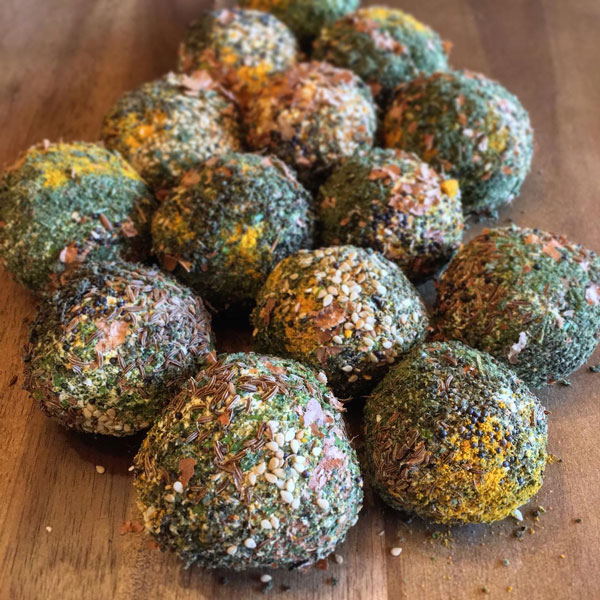
Redcap
MemberForum Replies Created
-
By fermented if you mean fermented outside the fridge, I’d say 4-5 weeks. By eaten, I’d say, I’ve eaten sauerkraut I’ve fermented, stored in the fridge, and was two years old.
-
Redcap
MemberFebruary 22, 2024 at 6:19 pm in reply to: Chattanooga TN and Tempe AZ first WEF smart cities in USAIt reminds me of living in the university area near downtown Tucson where you don’t need a car to get around; you can walk or bike just fine.
Same as when I lived in New York City. Don’t need a car there.
The difference is that I COULD HAVE a car and park it and go where I wanted outside of the area I lived in. That was freedom. Living in a WALKABLE small town or community or big city is not the problem.
It’s the lack of freedom to go somewhere else if you want.
-
I would also recommend Heidi from Rain Country. She has done this a lot in a dehydrator and over the wood stove. She’s a good source for it.
-
I haven’t gotten vaccinated chicks, but if my “M” you mean Marek’s just know that it won’t prevent them from getting it. It may help them not die from it, but they can still contract it. There’s some talk about the fact that it doesn’t really help future stock, because if it does run through the flock – and it WILL at some point if they are in contact with any wild birds in your yard – those birds who become infected and survive and then hatch out chicks will pass on immunity. By the third generation, you have chickens who are likely immune to Marek’s and that strengthens the flock.
Marek’s went through our flock of 12 last summer when we moved them all to the big fenced yard to free-range as we normally do. But 5 were younger pullets hatched in the spring and we lost 4 of them.
We lost 3 others to other things (previous injury, fox, gave one away)
I bought 10 more chicks in September and have kept them separate from the older hens. They are now 22 weeks old and old enough to be exposed more safely, but integrating them at this age is going to be tricky so we’ll just wait until the weather is warmer and then do our best to minimize attacks.
We already had one bad meet-up a couple of days ago through a fence as a young one challenged #2 hen who pecked the beak so hard right in the middle at the top that she split it clear across from side to side just under the nostrils. We saved the beak so far and glued it (not a happy pullet) but we’ll see if she can keep it on and regrow it.
Marek’s is more lethal to pullets from 8-20 weeks. Mine got it at 16 weeks, it seems, and died or had to be put down within 2 weeks. We NEVER had a problem with it until last summer, but if you have free-ranging birds, they probably will be exposed to it at some point. If they are old enough, you probably wouldn’t even know because they have enough of an immune system to not even get sick.
-
I love how specific she gets so you can really picture what you can do and what space you’d need. It seems the biggest mistake people make is not having a plan for the space they have. They’ll can up a storm and find they don’t have a place for all those pint and quart jars. This article could really help people think about creating a storage space for what they want to have put by for winter or for long-term. Thanks for sharing it.
We’re just two older people who eat very simply. We managed an entire year’s worth of food on two large metal shelf units, including home dehydrated potatoes, greens, other veg, fruit, meat, eggs, dried cheese, dry milk (store-bought) and then we have fats and oils, salt, spices and herbs, and cornmeal, and oats (although we don’t eat a lot of grain as we eat more potatoes), honey and molasses. There’s also 2 years of black tea and all our dried herbs for infusions (mostly nettle, eleuthero, and comfrey).
-
I can’t speak to big commercial windmills for a personal property, but every farm used to have at least one water windmill pump and often close to the house. So as far as noise, they were rickety and made noise but you live with what you have to.
Years ago, we made a windmill washing machine from a Mother Earth News design and it was not quiet, but not super loud.
I guess it depends on what kind of system you’re talking about, but I’ve lived with these smaller windmills and I’ve lived in the Arizona desert with wind scoops and wind exhaust vents/turbines and they were fine.
Again, I don’t know what kind of system you’re talking about but I would think a few smaller and less noisy windmills could easily generate quite a bit of power and you could keep those well oiled and in good repair.
-
This blogger shows how to make cheese with nettle rennet. https://monicawilde.com/how-to-make-nettle-cheese/
monicawilde.com
How to make Nettle Cheese - Mo Wilde
This is a light cheese made with a nettle rennet and cow’s milk. Using a vegetable rennet rather than calf rennet allows you to make a vegetarian cheese. There are… Read More
-
I have used nettles as a simple rennet before. I also eat them, dry them and drink the infusion regularly. It’s a powerhouse of vitamins and minerals, 300-500mg of calcium per cup of infusion (not tea). I also dry it and mix it into my chicken feed for winter so they get greens, along with tons of chickweed and henbit. But nettle is a great food. The longer you cook it, the higher the vitamin A load as cooking breaks down plant cell walls. Humans don’t have the digestive enzymes to break down most plant cell walls so cooked vegetables are more nutrient bioavailable than raw or lightly steamed. Cooking just means breaking down cell walls: freezing, drying, fermenting, heating – boiling, baking, marinating in oil or fat. Just a handful of nettle in a slow-cooked soup or stew is a huge nutrient hit.
This is why we grow it. Our acre is all rock and trash, apparently, and we are too shaded to garden. Food forest is a better means of providing, but that means less variety and few modern foods. So we eat historically around here, more like medieval people or early American colonists living away from settlements. A lot of nettle, dandelions, and poke for us.
-
We are also not off-grid, although I have lived off-grid, but we live a lot like we are also. You can get a fan for the top of the wood stove that is non-electric. We use the inexpensive Tomersun 3 blade and for the price have a spare. But we’ve used it 3 years and it’s still going strong. It’s less expensive now than when we bought it.
A solar shower bag filled with water warmed on top of the wood stove should make showering much easier on you.
I have always hung up my laundry on a line because I wear only cotton and wool and they would shrink in a dryer.
We just scored this 30″ potbelly stove that we’re going to put in the back of the house where our wood stove doesn’t heat well. Not only can we warm the back of the house for VERY little wood, we can have boiling water for tea and coffee and ditch the electric kettle. Because the stove is small, we could disconnect it and move it easily to the back patio and use it all summer. The local Amish sometimes move their giant cookstoves out to a porch for summer.
I dehydrate most of the food I preserve and store and I do that almost exclusively by the wood stove, but I do have a Nesco dehydrator (used) for spring and summer things that can’t wait. I also made a couple of hanging dehydrators out of racks from old free jerky dehydrators that I use to air dry greens in summer.
It’s okay if you’re still on-grid for your husband. It’s the way you give love to him because that’s what he wants. 😘 But you can still do all these other things to live more off-grid if that’s what you enjoy. And maybe during a power outage or something, you’ll have things in place and he’ll have to use them and he might like some of them.
-
Redcap
MemberDecember 11, 2023 at 12:37 am in reply to: That organic vinegar not so much so anymore 🙁Time to start some batches of fruit vinegar. https://www.youtube.com/watch?v=depySASTPrw
-
I used to always take out everything from the question mark on as a habit because I would post links to one of my Etsy items, for example, and the link would be MILES long after the question mark. Removing it did not change access to the page at all and then I didn’t need bitly or anything to share a link. I didn’t know that part might include tracking. Good habit anyway, removing everything question mark on.
-
Chickweed. Excellent in salads. Chickens love it. You can dry it and add it to their winter feed. If you collect seeds, you can grow it for them to forage on. I tincture it also for medicinal purposes.
-
You’re welcome and good luck. Enjoy your chickies!
-
Susun Weed gives a recipe for herbal rennet in Healing Wise:
1 quart nettles and 1 quart water 1 teaspoon salt
Cook leaves in simmering salted water in well-covered pan for ten minutes. Strain and add to warm milk. (Each cup of this will curdle 4 quarts (1 gallon) of milk.)
-
Redcap
MemberDecember 11, 2023 at 1:25 am in reply to: That organic vinegar not so much so anymore 🙁I happened to make several quarts and a couple of half gallons of herbal vinegars last summer using the good Braggs ACV before the change. I did notice the weird color change in the Braggs a few months after I had done that when I passed it in the grocery store. So I’m good on vinegar for now. But I’ll make my own next summer.


